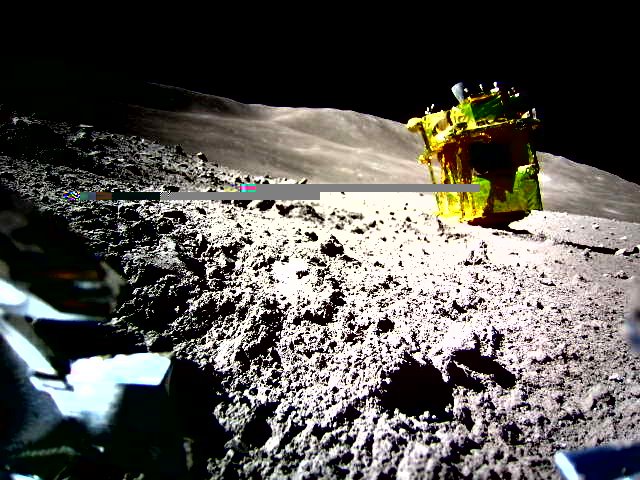The Japan Aerospace Exploration Company has shared the very first image of its lander on the lunar surface, but it’s not quite the picture-perfect scene one might expect. In a surprising twist, the spacecraft appears to have landed upside-down on the moon.
Despite this unexpected turn of events, JAXA remains optimistic about the mission’s success. The agency explained in a recent update that an “abnormality in the main engine” caused the spacecraft to lose its proper orientation just 50 meters above the lunar surface. As a result, the solar panels were unable to properly charge because they were not facing the sun.
But even in the face of this setback, Japan has still accomplished an impressive feat. By successfully performing a soft landing on the moon, they have become only the fifth nation ever to do so.
Interestingly, the spacecraft’s onboard software was able to autonomously guide its descent even after the main engine was lost. However, the lander still ended up touching down at a slightly faster speed than intended, at around 1.4 meters per second. It also ended up in a nose-down position, rather than upright as planned.
Surprisingly, the lander still managed to land only 55 meters away from its original target site. Despite the unexpected landing position, JAXA officials have deemed the mission a success, as the primary goal was to demonstrate pinpoint landing technology with an accuracy of within 100 meters.
Earlier this week, the agency had announced that the lander had been powered down as planned, to prevent the batteries connected to the solar cells from discharging too quickly. The solar cells, which were facing west, are now being observed to see if they can still generate power for the spacecraft once the sun’s direction changes.
In addition to the lander, the spacecraft was also carrying two rovers. One of these, named Lunar Exploration Vehicle-2 or SORA-Q, is responsible for capturing the first image of the lander. The rovers were deployed prior to the lander’s descent.
As JAXA continues to investigate the cause of the main engine’s failure, the agency has promised to provide updates as more information becomes available. In just over a week, the lander’s solar cells will once again be facing westward, offering the possibility of mission recovery. Only time will tell if Japan will be able to make some adjustments and continue their lunar exploration.









[…] Japan Aerospace Exploration Company has just unveiled the first image of its lander on the lunar surface. It’s an exciting moment as the Spacecraft successfully landed on the […]